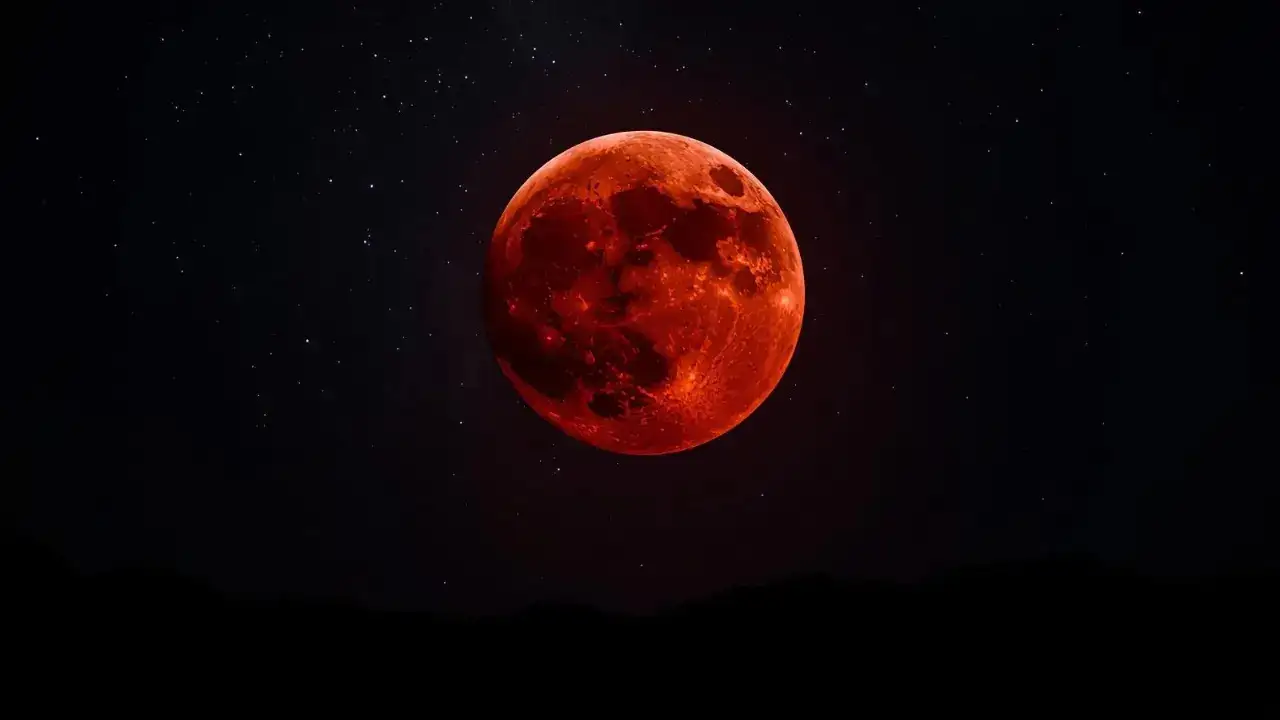Chandra Grahan 2025: Total Lunar Eclipse Turns Moon Red, Visible Across India & Major Cities Worldwide
Chandra Grahan: Total Lunar Eclipse Turns Moon Red: This beautifully written piece describes an upcoming total lunar eclipse, also known as a Blood Moon, with poetic imagery and scientific insight. Here’s a structured summary of the key points and a deeper explanation:
Overview of the Lunar Eclipse Event
- Date & Time:
- Starts (Penumbral Phase Begins): 8:58 PM
- Partial Eclipse Begins: 9:57:22 PM
- Total Eclipse Peak: 11:27:17 PM
- Eclipse Ends: 2:25 AM (following day)
- Duration: ~3.5 hours total
- Visibility: Seen in India and four other countries (not named in the excerpt).
- Type: Total Lunar Eclipse (with phases of penumbral, partial, total, and back to penumbral).
Phases of the Eclipse & Color Changes
| Phase | Time | Moon’s Appearance |
|---|---|---|
| Penumbral begins | 8:58 PM | Slight blurring; silver moon becomes dimmer |
| Partial Eclipse Begins | 9:57 PM | Earth’s shadow starts covering the moon |
| Total Eclipse Starts | ~11:00 PM | Moon fully engulfed in Earth’s shadow |
| Maximum Eclipse | 11:27 PM | Moon appears deep red – the “Blood Moon” |
| Total Eclipse Ends | ~12:25 AM | Moon starts emerging; turns orange |
| Partial Eclipse Ends | ~1:25 AM | Shadow gradually leaves moon |
| Penumbral ends | 2:25 AM | Moon returns to normal appearance |
Why Does the Moon Turn Red? – The Blood Moon Explained
- During a total lunar eclipse, the Earth comes directly between the Sun and the Moon, casting a shadow on the Moon.
- Sunlight passes through Earth’s atmosphere, where:
- Blue light is scattered
- Red light bends (refracts) and reaches the Moon
- This causes the moon to appear red/orange, similar to how the sky looks during sunrise or sunset.
Upcoming Total Lunar Eclipses:
| Date | Eclipse Type |
|---|---|
| March 2, 2026 | Total Lunar Eclipse |
| December 31, 2028 | Total Lunar Eclipse |
| June 25, 2029 | Total Lunar Eclipse |
| April 25, 2032 | Total Lunar Eclipse |
Sutak has no effect on Pitru Paksha
- The eclipse occurs on Bhadrapad Purnima, which marks the start of Pitru Paksha – a period of honoring ancestors.
- Sutak (ritual inauspicious period) begins at 12:57 PM, but:
- No impact on Shraddha rituals this time, say religious scholars.
- Prof. Vinay Kumar Pandey notes this eclipse is very significant, even covering part of the sky.
This eclipse isn’t just a scientific event — it’s a rare celestial spectacle, a moment of cultural significance, and a reminder of the grand, interconnected nature of our solar system. Whether you’re watching for the science or the symbolism, this Blood Moon is worth witnessing.





